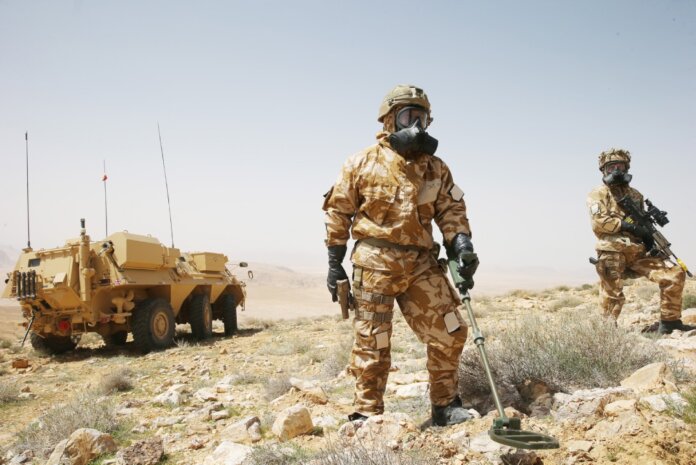
Despite the impact of COVID-19, there is still good reason for governments to affirm their commitment to new CBRN equipment and training.
The long delayed UK Defence Command Paper (DCP) published in March 2021 made reference to Chemical, Biological, Radiological and Nuclear (CBRN) warfare. It stated that the proliferation of CBRN weapons and advanced conventional weapons, combined with new technologies, will increase the risk of conflict and serve to increase their ferocity. While international agreements have long sought to limit the development of these capabilities, adversaries are increasingly breaching their terms or altogether withdrawing from these commitments.
While CBRN weapon use remains an enduring and growing threat to the UK, deployed forces and international stability, the DCP claimed that the UK MoD will have capabilities in place that will allow the country to maintain its political and military freedom of action despite the presence, threat or use of such materials. The DCP also stated that the MoD should be prepared to provide counter-forces to support a homeland resilience response to multiple threats and maintain its contingent capability to operate overseas. The UK should support efforts to improve its preparedness to deter and defend against an incident and to ensure that its forces are best equipped to fight and prevail in a threat environment, both today and in the future. The DCP maintained that the MoD’s world leading science and technology capability will continue to play a vital part in countering current and emerging CBRN threats.
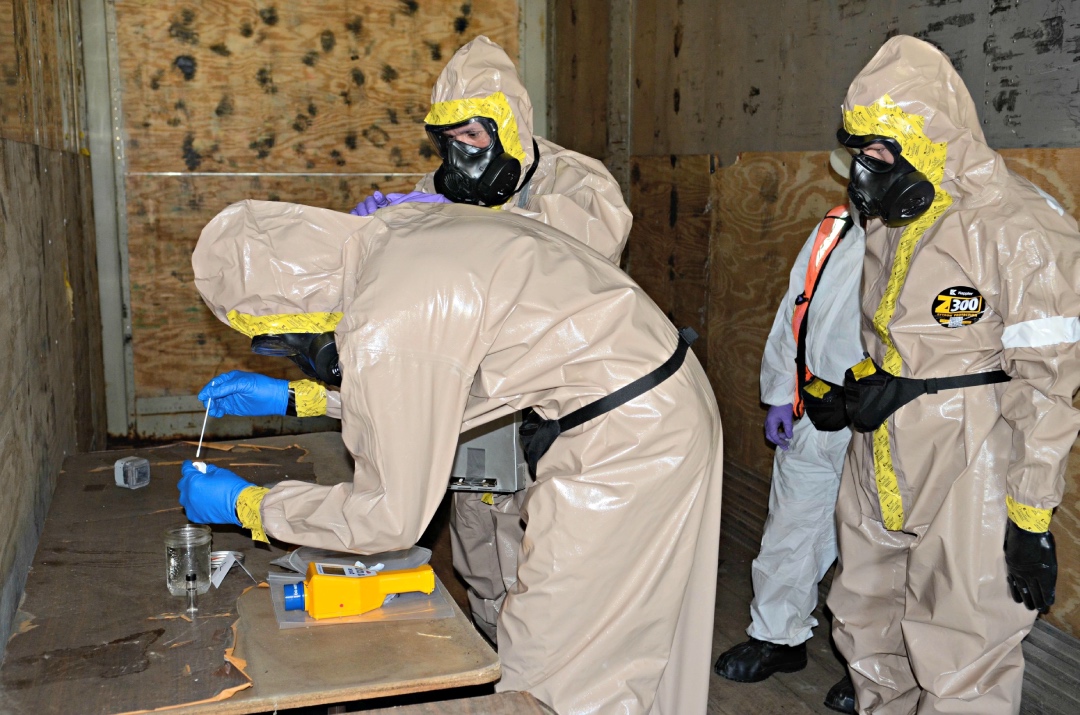
CBRND Confusion
This has not always been the case. The UK’s Chemical, Biological, Radiological and Nuclear Defence (CBRND) capabilities have been largely neglected for the last two decades with responsibilities being passed from the British Army to the Royal Air Force (RAF) and back to the Army.
The importance of the UK’s CBRND capabilities has been highlighted both in the conflict in Syria and closer at home, in the response to the Salisbury Novichok nerve agent incident in 2018 which saw former Russian spy Sergei Skripal and his daughter poisoned. Military personnel from the Army and the RAF worked in support of the civil authorities with the recovery operation in Salisbury in the aftermath of the nerve agent attack during Operation Morlop, including personnel from the Falcon Area Survey & Reconnaissance Squadron. The Falcon Squadron is the British Army’s only mounted CBRND unit and is manned by the Royal Tank Regiment, and equipped with 11 Rheinmetall Landsystems 6×6 Fuchs TPz vehicles which are capable of chemical and radiological hazard detection. They are crewed by four CBRN specialists. However, the unit has only 70 personnel and the Fuchs, which were delivered in 1990 to support ground operations during the First Gulf War, are approaching obsolescence, and although the MoD awarded RBSL a $21.4 million (£16 million) contract in October 2020 to upgrade and sustain nine vehicles and a training simulator, they will not be returned to service before 2024.
Exercise Toxic Dagger, the largest annual chemical warfare exercise in the UK, involving 40 Commando Royal Marines and personnel from the Defence Science and Technology Laboratory (DSTL), and supported by Public Health England (PHE) and the Atomic Weapons Establishment (AWE), took place soon after the Salisbury attack. DSTL delivers specialist support to military operations, provides specialist technical advice to support counter-terrorism, offers impartial advice and analysis to the UK Armed forces and supports the delivery of intelligence capability within the MoD.
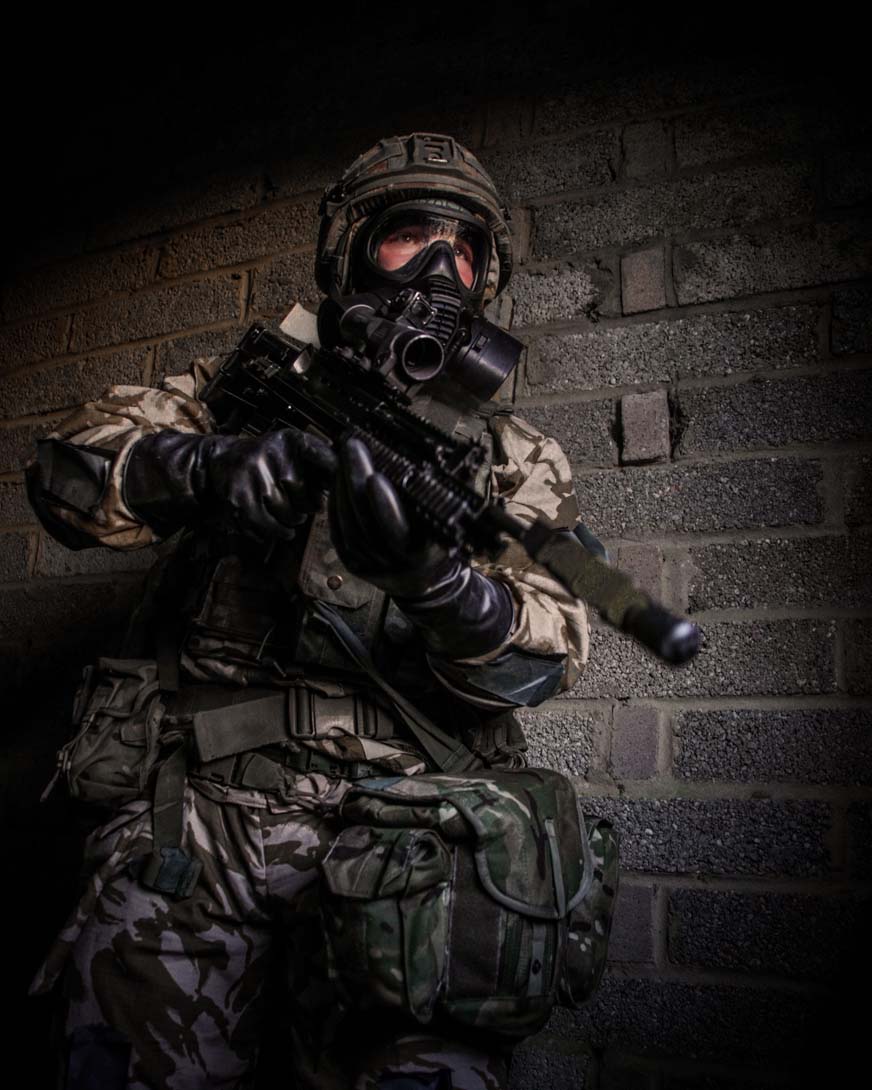
The three-week exercise included company-level attacks and scenarios concerning typical CBRN features, concluding with a full-scale exercise involving government and industry scientists and more than 300 military personnel. It climaxed with a full-scale casualty treatment exercise involving the RAF Regiment. A chemical decontamination area was set up to treat ‘polluted’ Royal Marine commandos. Once cleansed, the casualties could be moved to local hospitals.
The Royal Marines have also set up a unit specialising in chemical warfare skills. Yankee Company from 45 Commando based in Arbroath, Scotland, are the first marines tasked to assist the civil emergency services when military support is requested to respond to a CBRN incident through the Military Assistance to Civil Authorities (MACA) process.
Preparing for Toxic Attack
Exercise Toxic Dagger was planned to be an annual exercise but was cancelled this year (2021) due to a backlog of activity from the COVID-19 lockdown periods. Other CBRN-themed exercises cancelled or postponed included the NATO multinational exercise Clean Care which first took place in 2016 with over 200 personnel from seven countries. Conducted at the military training area Tisá in the Czech Republic, this CBRN and medical training event was aimed at NATO interoperability at a tactical level.
UK personnel also participate in Exercise Precise Response at Canadian Forces Base Suffield in Alberta. This annual NATO exercise provides the Canadian Armed Forces, along with participants from various NATO allies and partner nations, the opportunity to participate in CBRND training in a multinational environment.
The NATO directed Joint Chemical, Biological, Radiological, and Nuclear Defence Capability Group (JCBRND-CDG) is responsible for several multinational CBRN exercises including Toxic Trip which involves the training of different aspects of CBRND related with air operations in a multinational scenario. Exercise Toxic Fjord is a similar exercise in the maritime sector.
Exercise Toxic Valley is a live exercise organised by Slovak Armed Forces conducted to train specialist teams and laboratory crews in sampling and identification of chemical agents in conditions close to operational needs, in accordance with NATO AEP-66 standards for sampling and identification of biological and chemical, and radiological agents.
Germany has hosted Exercise Coronet Mask where NATO CBRN battalions undergo a series of drills based on scenarios demonstrating the identification, reconnaissance, analyst and decontamination of chemical agents. Six NATO allies participated in Exercise Yellow Cross held in the Czech Republic to train in detecting and responding to CBRN attacks, including the decontamination of soldiers and materiel.
While many of these live CBRN exercises have had to be modified, with soldiers undertaking precautions against COVID-19 by social distancing and wearing masks, some have had to be conducted virtually.
The United States has continued to hold regular individual CBRN exercises for all its Armed Forces both in Continental United States (CONUS) and overseas. One such was the annual Exercise Patriot 21 that took place in June 2021 at Volk Field Air National Guard Base in Wisconsin involving specialists from the US Air National Guard Emergency Management, US Army National Guard CBRN along with insight from Federal Bureau of Investigation (FBI) WMD Coordinators. The exercise focused on local, state, federal and private sector organisations responding together to a natural or man-made emergency. It tested responders ability to deal with such scenarios as earthquakes, collapsed buildings, blocked roads, mass casualties and the need for search and rescue. Participants in Patriot 21 included National Guard soldiers and airmen and Naval Reserve sailors in various career fields from 26 states.
Back to Business
“It’s been more than a year that we’ve been in a pandemic, and we’ve also had civil disturbance and natural disasters along the way, and we’ve been in response mode,” said exercise director, Lt Col Roger Brooks. “But we’re getting back to the business of training for those situations now. It’s all about training with our local civilian agencies and partners and improving our communication and ability to work seamlessly with different entities.”
Recent events have shown that Russia is fully capable of developing and producing an advanced range of biological and chemical weapons, and its troops are well equipped and trained for nuclear, biological and chemical (NBC) warfare. In February 2017, Russia’s Southern Military District announced that NBC field exercises involving some 2,000 specialist personnel and more than 350 NBC vehicles were taking place in training areas across Russia.
The latest Russian Arzamas Machine-Building Plant RKhM-6 chemical reconnaissance vehicles have recently entered into service with NBC troops. Based on the BTR-80 8×8 wheeled amphibious armoured personnel carrier, the RKhM-6 features a conventional layout accommodating the driver’s compartment at forward hull, and an NBC laboratory in the middle and engine at the rear. The vehicle features the PRKhDD-2B, a fully automated long-range chemical reconnaissance device that analyses the composition of toxic substances at a distance of up to three kilometers.
Although large scale Russian NBC exercises have been reduced due to COVID-19, more than 800 troops from the Black Sea Fleet NBC Protection Force took part in several weeks of training during August 2021 while NBC protection units of the Guards tank army of the Western Military District completed training during the joint Russian-Belarusian Exercise Zapad-2021 a month later.

Australia Invests
On the other side the world, the Australian Defence Force (ADF) continues to invest in CBRNE capabilities, counter-measures and autonomous systems, against a backdrop of escalating tensions with the People’s Republic of China and the unpredictability of North Korea. The Australian Army has embarking on a major modernisation programme following the publication of its 2016 Defence White Paper that confirmed the transformation of its land forces by 2035. A lot of time and effort has gone into ensuring the ADF can operate effectively with allied and coalition partners across all domains. When considering CBRND interoperability, it is essential that Australia is aligned closely with partners. Following an agreement at the Joint Warfare Council in November 2016, the ADF is now adopting the NATO CBRND tactical level doctrine.
In 2017 the Australian Department of Defence (DoD) announced that the ADF would receive equipment worth almost $216 million (AUD300 million) for protection against CBRN threats as part of Project LAND 2110 Phase 1B. The project will deliver individual and collective protection from CBRN hazards including detectors, suits, masks, protection tents, decontamination systems, contaminated equipment containers, warning and reporting software and simulation systems. The project also included the provision of new and upgraded facilities at 14 sites nationwide to support individual and collective CBRND training.
In September 2018 the $176 million (AUD243.5 million) contract for the Land 2110 Phase 1B project was awarded to Leidos Australia for an initial phase of five years with an options to extend to 2026. It also includes an $8 million (AUD11 million) contract to AirBoss Defense for the delivery critical PPE including gloves, overboots, and the recently launched Low Burden Mask.
Following exhaustive trials, OPEC CBRNe was informed that the Kestrel CBRN ensemble was identified as the preferred Medium Weight Protective suit for LAND 2110. The versatile two-piece Kestrel which is made in Scotland, is ideally suited to high-heat environments while delivering long-term comfort, breathability and ease of movement and its low weight was a key feature in OPEC’s successful tender to the Australian Government.

Recently the People’s Liberation Army (PLA) Rocket Force stepped up its CBRN warfare exercises, in what its military experts say is preparation for a possible nuclear attack by the United States. CBRN exercises have become a major training focus in the PLA’s Western Theatre Command and with Rocket Force troops and earlier this year (2021) these troops took part in the largest ever anti-nuclear weapon drill involving combat troops wearing chemical protection suits while working in the Gobi Desert, where the temperature is over 40 degrees Celsius.
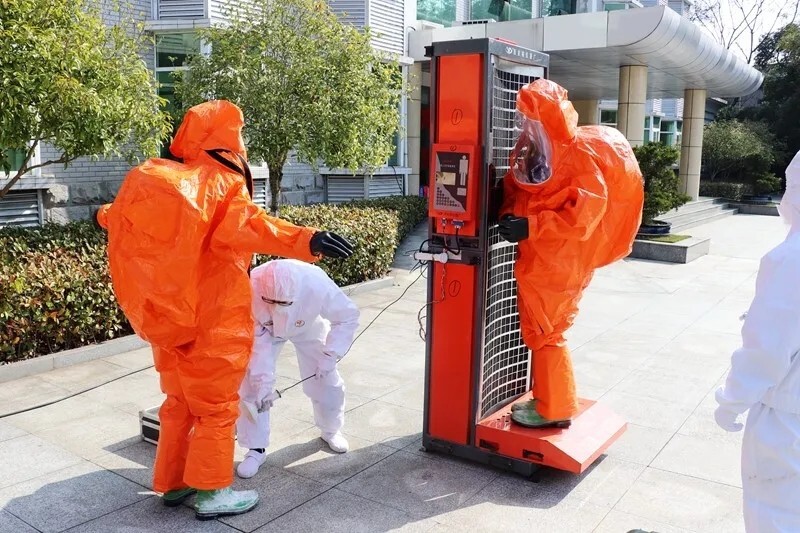
North Korea, which withdrew from the Nuclear Non-Proliferation Treaty in 2003, has recently threatened several regional neighbours, including Australia, with nuclear weapons. In the September 2021 military parade to celebrate the 73rd anniversary of North Korea’ founding, hundreds of troops were seen wearing chemical protection suits and respirators for the first time.
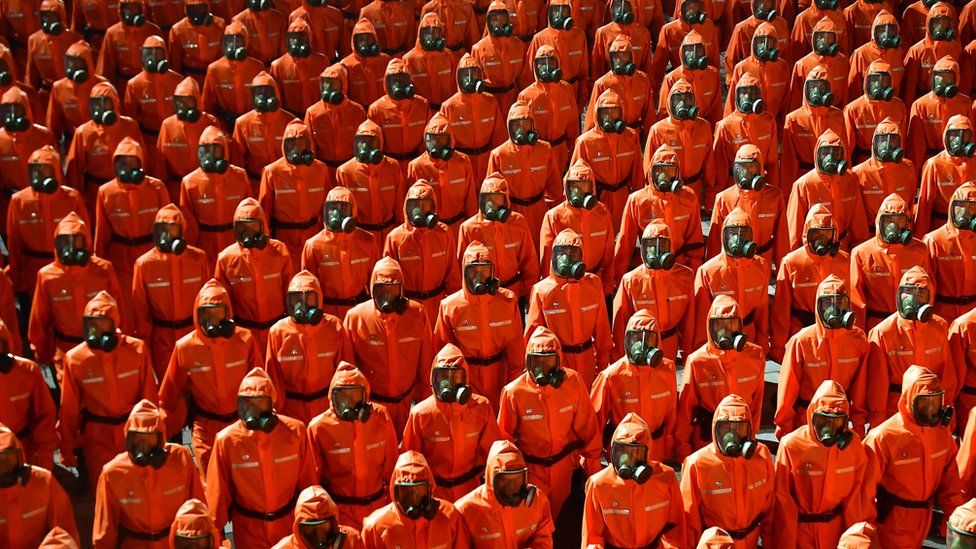
by David Oliver













